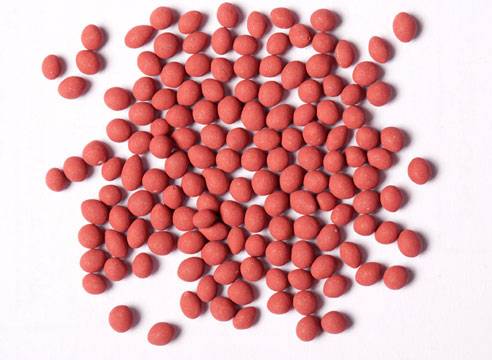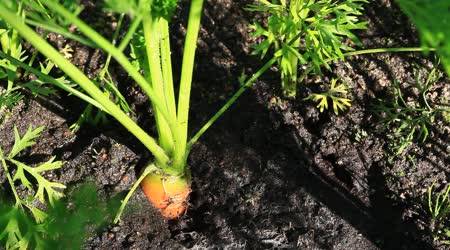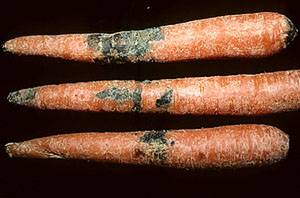Content
Varieties table carrots divided according to ripening periods into early ripening, mid ripening and late ripening. The timing is determined from germination to technical ripeness.
When choosing delicious varieties of carrots in the store, you should focus on the mark “excellent taste” or “very good taste”.
But to choose the best variety for your site, you should consider several factors:
- soil quality. Long-fruited varieties can be planted in light, loose soil; short-fruited carrots can be planted in heavy clay soil;
- ripening time. The earliest ripening varieties are short-fruited;
- productivity. Interesting-looking varieties carrots with round fruits grow quickly, but do not differ in productivity;
- commercial purposes. If carrots are grown for sale, it is better to take imported beautiful varieties, although they do not taste as good as domestic ones. For yourself, it is better to take domestic ones, which are better adapted to local conditions and are sweeter.
- color. White, red, black, purple, yellow, orange, pink, burgundy and even green. Today you can find carrots of almost any color. Each has its own interesting features.
Which varieties of carrots are best to plant is up to the owner of the dacha plot to decide.
Most often, early-ripening carrot varieties are characterized by juiciness, but a lower content of saccharides than in mid- and late-ripening varieties, as well as an inability to withstand long-term storage. But they take it on time when you really want fresh young carrots.
The best varieties of early ripening carrots
Variety Alenka
High-yielding early ripening variety. It only takes 50 days for bunched products to mature. The fruits are not very long, up to a maximum of 12 cm. Root weight up to 100 g. Sugars 5.4-8.5%, carotene up to 13.5%. The taste of this variety is not as sweet as the later varieties, but it has a lot of moisture.
Choosing which one variety of carrots from early ripening will be suitable for heavy soil, you can pay attention to the time-tested Karotel.
Variety Carotel Parisian
The best variety of early ripening carrots, capable of growing in heavy clay soils. The average ripening period is about 72 days. Root vegetables with a diameter of up to 5 cm and a weight of up to 60 g. Contains a large amount of saccharides and carotene. Children really like it because of its delicate pulp and high sweetness. Suitable for both fresh consumption and canning and freezing. Unfortunately, it is not suitable for long-term storage, as it is prone to cracking.
The best varieties of mid-season carrots
It is easy to get confused about the varieties of mid-season carrots, since their choice is very wide and all are advertised as the best. Such varieties as Nantes 4 and Vitaminnaya 6 are widely known. But many other varieties of domestic selection are not inferior to these varieties.
Variety Losinoostrovskaya 13
Old and popular gardeners have a variety. Recommended for breeding almost throughout Russia. It was bred in the USSR as a frost-resistant variety, which allows it to be grown even in those regions where summer is shorter than the time required for this variety to ripen (on average 110 days). The variety can withstand frosts down to -4°C.
The length of the root crop is more than 15 cm and weighs up to 115 g. The color is bright orange, which indicates a high carotene content: 18.5 mg/100 g. The yield of the variety is very high, up to 7.5 kg/m².
Variety Moscow winter a 515
The once almost forgotten variety has today returned to its position, and manufacturers have even begun to offer Moscow Winter seeds on a tape, which makes planting this carrot much easier.
The variety is classified as mid-season. It can be sown before winter. For winter crops, it is suitable for collecting bunched products 10 days earlier than Nantes. Fruits up to 16 cm and weighing up to 170 g. Root crop of bright orange color. Productivity up to 7 kg/m².
The variety is intended for cultivation almost throughout Russia. It is good not only for winter crops. Shows good results when sown in April-May. The best of those intended for fresh consumption in winter. Has high keeping quality.
The best varieties of late-ripening carrots
Variety Queen of Autumn
Late-ripening, relatively young variety. Entered into the State Register in 2005. The variety is recommended for the Middle Zone and the Far Eastern region. It takes 125 days to ripen.
The root crops are large, but vary quite widely in size (20-30 cm). Weight 80-230 g. The shape of the root crops is conical, with a slightly pointed tip. The color of the pulp is deep orange, almost red. The variety is very productive. Gives up to 9 kg/m².
It is not particularly sweet.Saccharide content up to 11%, carotene up to 17 mg. Excellent for long-term storage, preserving its taste.
Variety Red Giant
A late-ripening variety of carrots with beautiful, smooth roots about 25 cm long, which take 150 days to ripen. The root vegetables are dark orange with a carotene content of up to 15 mg/100 g. Excellent for long-term storage and fresh consumption.
Reviews
If grown incorrectly, it is impossible to obtain high-quality carrots that will display all the properties declared by the manufacturer. The best carrots are obtained by using competent agricultural technology.
Agricultural technology
Choosing a landing site
Carrots love direct sunlight, so choose a place for them with the maximum duration of exposure to the sun. In the shade, the yield and taste of root crops decrease.
The best predecessors for carrots are nightshades, cabbage, cucumber, garlic and onions.
Preparing the beds
To obtain high-quality carrots, the soil for sowing must be prepared to a depth of 25 cm. To grow carrots, ridges are made to increase the height of the fertile soil. If you remember that some varieties of carrots can grow over 20 cm in length, you shouldn’t be lazy. The root crop must have room to grow, then it will not bend and the result will be a beautiful, even carrot.
The ridges are made at a distance of 0.6 m from each other. The tops are leveled to create a bed 0.3 m wide.
There is no need to apply fertilizers in advance; you will need to feed the plantings later.
Preparing seeds for sowing
In order not to waste energy and sown areas, it is better to prepare the seeds for sowing. Preparation will identify empty seeds and speed up the germination of good ones. No effort is needed here. The seeds are simply poured with warm water and left for 10 hours, after which the pacifiers floating on the surface are caught and thrown away.
The remaining high-quality seeds are placed on a damp cloth for several days, maintaining a temperature of +20-24°C. The seeds will hatch after 3 days.
Video on how to prepare seeds and plant carrots
Sowing
In the prepared beds, furrows are made 3 cm deep and carrot seeds are placed in them in pairs at a distance of 2 cm and sprinkled with soil 1.5 cm thick.You can simply scatter the seeds along the top of the ridge, covering them with soil. No more than 60 g of seeds are sown per 1 m².
For the 2019 summer season, the manufacturer offers a new product: carrot seeds already prepared for planting on paper tape or in gel dragees.
When planting on paper, the tape is placed edgewise in the grooves and sprinkled with earth. All other preparatory and subsequent manipulations are carried out according to the standard scheme. The only exception is that the seeds are already glued to the paper at a distance of 5 cm and do not require weeding in the future.
There is also a nuance here. Experienced gardeners believe that sparsely planted carrots become too large and coarse. That is why the seeds are initially planted at a distance of 2 cm and then weeded, increasing the distance between the root crops to 6 cm after the second weeding.
You can stick any small seeds onto toilet paper yourself at home in winter. But the process takes a lot of time and requires great perseverance and accuracy.
Gel pills have certain advantages over other sowing methods. The seed enclosed in a pellet is protected from external unfavorable conditions and is provided, in addition to moisture, with an additional supply of nutrients.
When watering, the gel absorbs water in a certain amount. Excess water will pass by the seed. Thus, the gel protects the seed from rotting. At the same time, if there is a lack of water in the soil, the gel gradually gives the seed the water that it absorbed during watering, and the seed does not dry out.
When planting gel pills, carrot seeds are placed in furrows at a usual distance of 2 cm. The seeds covered with soil are watered very well. After this, you can forget about watering for 2 weeks.Further manipulations with crops are carried out according to the standard scheme.
Caring for carrots
Seeds take a long time to germinate, and young plants grow no faster. Sometimes the first weeding may be required even before germination. Carrot seeds germinate without pre-treatment for 40 days, and weeds have time to grow in place of the crops, which will need to be weeded. Weeds have a very bad effect on the development of carrots.
If there were no weeds, then the first time the carrot crops are weeded, or rather, thinned out, fourteen days after the emergence of shoots. After thinning, the distance between plants remains 3 cm. If the seeds were planted sparsely, there is no need for the first thinning. After the first two pairs of leaves appear, the carrots are weeded again, doubling the distance between the plants.
Fertilizers and watering
To obtain high-quality carrots, you have to take special care that they do not need water. With a lack of water, carrots become limp and bitter. The soil should be moistened along the entire length of the root crop. Adult carrots are watered so that the water wets a 30 cm layer of soil.
If the summer is hot, and you have frequent visits to your dacha, you don’t need to pour a lot of water on dry beds at once. The carrots will crack and become unsuitable for storage. It is better to start with 3 liters per m², and every other day water again at the rate of 6 liters per meter. Further depending on the weather.
Unlike many other garden crops, carrots do not need a significant amount of nitrogen; for this reason, the main fertilizer used to feed them is potassium-phosphorus.
A month after germination, carrots are fed for the first time, and a second time after two. It is quite difficult to calculate the required amount of solid fertilizers, so it is most convenient to feed root crops with liquid fertilizers. Add one of three feeding options to a bucket of water:
- 1 tbsp. l. nitrophosphate;
- 2 cups of ash;
- potassium nitrate 20 g, double superphosphate and urea 15 g each.
Video on how to grow a good harvest:
Diseases and pests
In general, carrots rarely get sick. There are three main problems: Alternaria, Phoma and carrot fly.
Alternaria blight
Carrots infected with this fungus should not be stored. While in the ground, a sign of plant damage is blackening and death of the lower part of the leaves. The leaves themselves turn yellow.
The fight against the disease consists of maintaining crop rotation (carrots are returned to their original place after 4 years), treating the seeds before planting and spraying the plants with Bordeaux mixture.
All post-harvest residues must be destroyed, and carrot storage facilities must be disinfected using formaldehyde or whitewash.
Fomoz
It is not dangerous for carrots in the first year of sowing. It begins to develop on root crops stored for storage. But when planting a root crop to obtain seeds, the carrots either die or the bush grows weak and produces fewer seeds.
The main danger of Phoma is that the seeds obtained from an infected root crop will also become infected.
There is no treatment, only preventive measures are possible:
- crop rotation;
- careful sorting before storage with the removal of all questionable and contaminated root crops;
- disinfection of storage and maintaining its temperature for carrot storage at 1-2°C;
- mandatory seed treatment or use of seed from healthy plants.
If you sow carrots from purchased seeds every year, the risk of infection from the seed is minimal, but it should be noted that Phoma is also well preserved in plant debris, so post-harvest parts of the plants must be destroyed.
carrot fly
A parasite whose larvae are capable of destroying the entire carrot crop. Whatever they can invent to protect against this pest.
One of the main ways of prevention is not to sow carrots in low-lying or shady places. The fly does not like the sun and wind. To repel it, carrots are sown interspersed with garlic, onions or tomatoes. This has an additional benefit, since carrots, in turn, repel the pest of onions and garlic - the onion fly.
Marigolds and calendula sown around the perimeter of a carrot bed attract enemies of the carrot fly. It is also necessary to monitor the density of plantings, thinning the carrots in time. The fly also does not like to settle in ventilated crops.
You can drown out the carrot smell with an infusion of pepper and mustard. You can also add them to the soil when loosening the soil. The fly does not tolerate peat crumbs, so you can fill the rows with it.
The video shows another interesting way to combat this pest:






















“Queen of Autumn” grows very poorly in heavy soil, the harvest is disgusting and the carrots are not tasty. For heavy ones, “Canada” is suitable, an excellent result. And so that the carrots do not get sick and are not eaten by the carrot fly, you need to water them 2-3 times per season, with an interval of 20 days, starting from June 1, with this composition - 10 liters of water - 0.5 teaspoon of boric acid (dissolve separately in hot water) + 0.5 tsp. potassium permanganate. After thorough watering, pour into the row spaces. This includes feeding and combating pests and diseases. beets too.